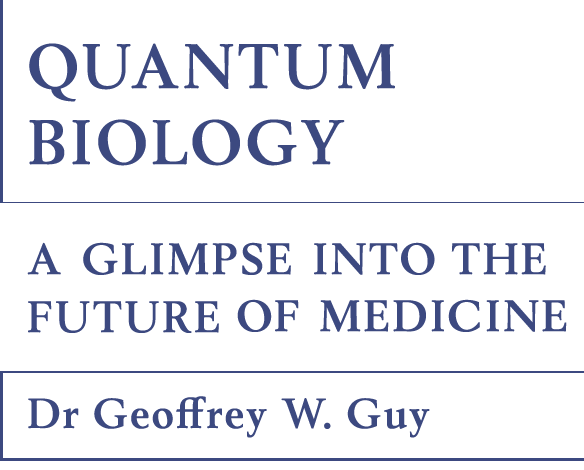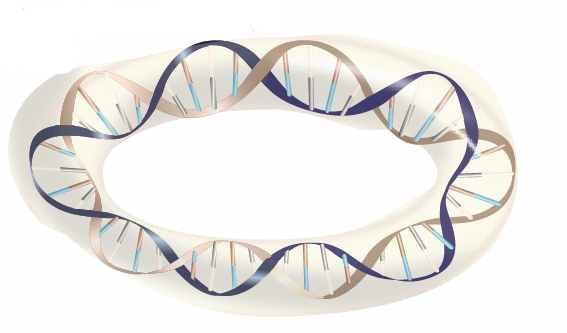
- About Geoffrey Guy
- List of chapters
- 1 Flatworms and xenobots
- 2 Beyond neurons: quantum effects in the brain
- 3 The ghost in the machine
- 4 Inflammation and equilibrium
- 5 The light fantastic
- 6 Lessons from the pandemic
- 7 Reassessing the causes of cancer
- 8 Energy, information and light
- 9 Before the origins of life
- 10 Unravelling the double helix
- 11 The computer in our cells
- 12 Space: the quantum frontier?
- 13 The quantum fractal
- 14 The path to mainstream
- Glossary
- Buy the book



10
Unravelling the double helix
This page provides online resources relating to Chapter 10 of Quantum Biology: A Glimpse into the Future of Medicine. Read a chapter extract, or scroll down to access figures and terminology, additional resources published by The Guy Foundation, and a list of further reading.
Name of the Chapter
Subheading
Harnessing the processes within our DNA may even allow us to manage the way we age. Specific genes have to be activated to produce particular proteins. This process is controlled by a chemical reaction known as methylation. Methylation changes with age and the mathematical analysis of large data sets of methylation have allowed scientists to build models which accurately estimate the age of cells, tissues and organs. Geneticists Steve Horvath and Kenneth Raj describe these estimates as ‘epigenetic clocks’ and believe they could hold the key to future anti-ageing treatments. They even raise the tantalising possibility of slowing down biological ageing by directly targeting methylation levels.
I think it will be a case of ‘watch this space’ as scientific thinking continues to develop. But if it is the case, as with most molecules, that quantum entanglement is what holds DNA together, that would explain why the output of our DNA is so well tuned to the fundamental requirements of our mitochondria, the quantum engine of life. The more we look at it, the more DNA itself turns out to be a product of the support our systems require to harness a gradient, whether the process is quantum or classical.
Buy the book here
DNA (deoxyribonucleic acid) is a molecule found in almost all organisms – including humans. It contains the instructions for the organism’s development, functioning, growth and reproduction. DNA is stored in the nucleus of a cell. It is arranged in two strands which are intertwined.

Mitochondria have their own DNA which is double-stranded but also circular. In humans, mitochondrial DNA represents about 1 per cent of total cellular DNA

Epigenetics is the study of how behaviour and environment can affect gene functioning. Epigenetic changes can be reversed and they do not change the DNA sequence within an organism. But they can modify the way in which the organism reads a particular sequence.
RNA (ribonucleic acid) is a messenger molecule carrying the instructions from DNA. Unlike DNA, it is formed only from one single strand. While DNA is self-replicating, RNA cannot replicate on its own.
Videos

The Guy Foundation 2024 Autumn Series
Proton-motive CO2 fixation, chirality, protometabolism and the emergence of genes
Professor Nick Lane, University College London (UCL)

The Guy Foundation 2024 Spring Series
Genes regulating ageing and the quest for immortality
Professor Joao Pedro Magalhaes, University of Birmingham

The Guy Foundation 2024 Spring Series
Understanding the mechanisms underlying epigenetic changes with age
Dr Ken Raj, Altos Labs Cambridge Institute of Science
Steve Horvath and Kenneth Raj, ‘DNA methylation-based biomarkers and the epigenetic clock theory of ageing’, Nature Reviews Genetics 19 (2018), doi.org/10.1038/s41576-018-0004-3
J. Juutilainen, ‘Effects of low-frequency magnetic fields on embryonic development and pregnancy’, Scandinavian Journal of Work, Environment & Health 17:3 (1991), doi.org/10.5271/sjweh.1716
P. Kurian, G. Dunston and J. Lindesay, ‘How quantum entanglement in DNA synchronizes double-strand breakage by type II restriction endonucleases’, Journal of Theoretical Biology 391 (2016), doi.org/10.1016/j.jtbi.2015.11.018
Michael Levin, ‘Darwin’s agential materials: evolutionary implications of multiscale competency in developmental biology’, Cellular and Molecular Life Sciences 80 (2023), doi.org/10.1007/s00018-023-04790-z
Elisabeth Rieper, Janet Anders and Vlatko Vedral, ‘Quantum entanglement between the electron clouds of nucleic acids in DNA’, arXiv quant-ph (2010), doi.org/10.48550/arXiv.1006.4053
L. Slocombe, J. S. Al-Khalili and M. Sacchi, ‘Quantum and classical effects in DNA point mutations: Watson–Crick tautomerism in AT and GC base pairs’, Physical Chemistry Chemical Physics 7 (2021), doi.org/10.1039/D0CP05781A
